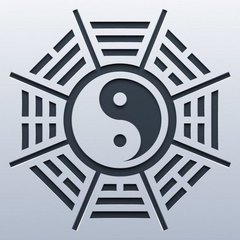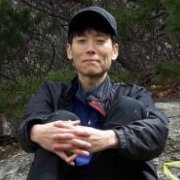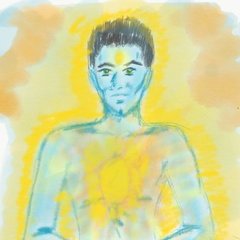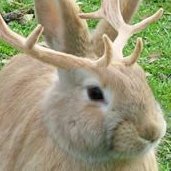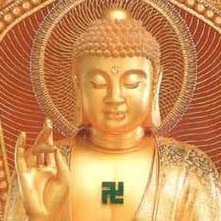Search the Community
Showing results for tags 'buddha'.
Found 23 results
-
Universal Messiah Hulagu Khan. The Tibetan schools of Sakya and Kagyu waged a muted, muffled political/religious war behind the scenes, in the shadows of the political vagaries of the Mongol onslaught upon the world. The Kagyu Drikung were caught in the midst of it all for the reason tha...
-
Dear Bums, I'm looking for a good biography or discussion of the Buddha's (Siddhartha Gotama) life and wonder which is your favorite or which have you found to be helpful. Thank you.
-
I had posted earlier in 2020. I have achieved a new power now. I can control rain and clouds. I can attract heat or cold with regards to my own practice. I have become the Rainmaker. But to achieve this power was not easy. It took me 8 years. I have some more powers but it should be kept hidden. I g...
- 55 replies
-
- 2
-

-
- superpower
- rain
-
(and 2 more)
Tagged with:
-
The following was written by a great friend of mine who learned from the late master Nan Huai Chin and an adept cultivator. May the story of the buddha be of inspiration and of benefit to all sentient beings. Namo Shakyamuni. --------------------------- Life of the Buddha...
-
- 1
-

-
- buddha
- shakyamuni
-
(and 1 more)
Tagged with:
-
Buddha has a hump on the top of his head Why? It is because The energy enters the body from top to bottom. The scalp was transformed into the hump neidan training allows your skin to breathe. It may deform the body from top to bottom(百會穴). The above information is ver...
-
A key takeaway is towards the end -- "One doesn't become Brahman...One always is that..."
- 11 replies
-
- 1
-

-
- swami sarvapriyananda
- advaita vedanta
-
(and 1 more)
Tagged with:
-
I came across this article from 12 years ago by coincidence. I noted that the Nepali government closed two offices associated with the Dalai Lama. According to the article, these two offices took care of 20,000 refugees. Does anybody have an insight about the impact of this closure to the growth of...
-
Hello Bums, I've been coming to this forum on and off for several years. I've had an interest in Taoism for about 5 years and have been reading the Tao Te Ching each morning for about that long. I also read about Buddhism and practice meditation. I've never had a teacher. Someone said I...
-
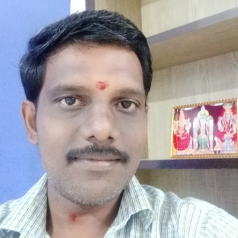
Awakening Through Mindfulness – Bridging Science and Spirituality
Shanmugam posted a topic in General Discussion
One of the reasons for much of the suffering that we go through in life is taking life too seriously. It is not uncommon though; almost everyone is so serious about the drama of life. So, everyone has assumed that there is no way out of it. But, there is a potential for a change in your attitude tow...-
- 2
-

-
- awakening
- mindfulness
-
(and 3 more)
Tagged with:
-

Sadhguru Jaggi Vasudev gives a speech about Shakyamuni Buddha
JustARandomPanda posted a topic in Buddhist Discussion
I think the board might appreciate this video. -
So I was watching a Youtube vid about the Prophecy of Maitreya's Future Buddhahood when there was a line translated in the vid that talked about cultivating the Four Dharmas of Attraction. For some reason that line popped out at me tonight like it never had before ( I really like that video as it al...
-
The bud in the lotus is the jewel of the lotus also known as the dragon's pearl that grants all wishes. In egypt the lotus is known as the rebirth. also watch buddha reborn https://www.youtube.com/watch?v=jW98rii_MJ0 Buddha beat the power of 6 and defeated mara please understand
-
Recently been reading through some of the medicine Buddha sutras. Medicine Buddhas appear as two types--the Lapis Lazuli Buddha of the eastern land and the healer bodhisvattas. The dharani of Lapis Lazuli Buddha is beautiful, esp. as performed thusly: Now, Lapis Lazuli Buddha has hi...
-
.
- 36 replies
-
- 2
-

-
- buddha
- enlightenment
-
(and 1 more)
Tagged with:
-
http://www.tricycle.com/what-buddha-never-said/there-no-self "When Vacchagotta the wanderer asked him point-blank whether or not there is a self, the Buddha remained silent, which means that the question has no helpful answer. As he later explained to Ananda, to respond either yes or no to this...
-

Discriminations Between Buddhist and Hindu Tantras
Tibetan_Ice posted a topic in Buddhist Discussion
Hi, I came across this web page the other day. It is a comparison of the types of siddhis or powers achieved by Buddhists and Hindus. Is there any truth to the idea that Buddhism is superior to Hinduism because the achievements are greater? Is Yogi C. M. Chen authentic? He seems to have adv... -
Falun Dafa- Turning the Great Law Wheel Introduction Video- The Nature of the Universe is Truthfulness, Compassion, and Tolerance http://www.youtube.com/watch?v=1yfY6YlBJBAhttp://www.youtube.com/watch?v=3qoXgKjMguE It is totally free. Everything to get started can be got free off the interne...
- 16 replies
-
- Falun Dafa
- Falun Gong
-
(and 8 more)
Tagged with:
-
Buddha kept silent about God. This means that God is beyond words, mind and logic as said in the Veda. Buddha means the Buddhi or Jnana yoga that speaks about the absolute God. Thus He is the greatest incarnation of God. If one thinks Him as atheist, there can be no better fool. Mohammed showed the...
-
Boddhidharma & Shaolin 18 Lohan Hands Info on Boddhidharma (also known as Damo, Tamo, or Tatmo), the first Patriarch and founder of Zen Buddhism who traveled from India to China where he taught Yoga and the 18 Lohan Hands exercises, to the Shaolin Monks. These exercises became blended with many fig...
-
An excellent documentary I found explaining the traditions of Tibetan Buddhism. Tibetan Buddhism is considered by many to be the most authentic form of Buddhism still in existence today. Included in this documentary is video footage of Yoga practices called Tummo and Trulkor- [media]http://www.yo...
- 10 replies
-
- 3
-

-
- Tibetan Buddhism
- Dalai Lama
-
(and 8 more)
Tagged with:
-
Here is a cool BBC Documentary entitled "The Life of the Buddha"- [media]http://www.youtube.com/watch?v=zFbjDcz_CbU[/media ]
- 1 reply
-
- BBC
- Documentary
-
(and 8 more)
Tagged with:
-
- 2 replies
-
- 1
-

-
- Buddha
- Starting Young
-
(and 8 more)
Tagged with:
-
The Aquarian Gospel- Jesus Christ's Lost Years in India and Tibet Uncanny similarities between the Teachings of Jesus Christ and the Teachings of the Buddha. Really they are not as geographically as far from each other as people often realize- Jesus in the Himalayas- The Aquarian Gospel...
- 4 replies
-
- Aquarian Gospel
- Age of Aquarius
- (and 8 more)




